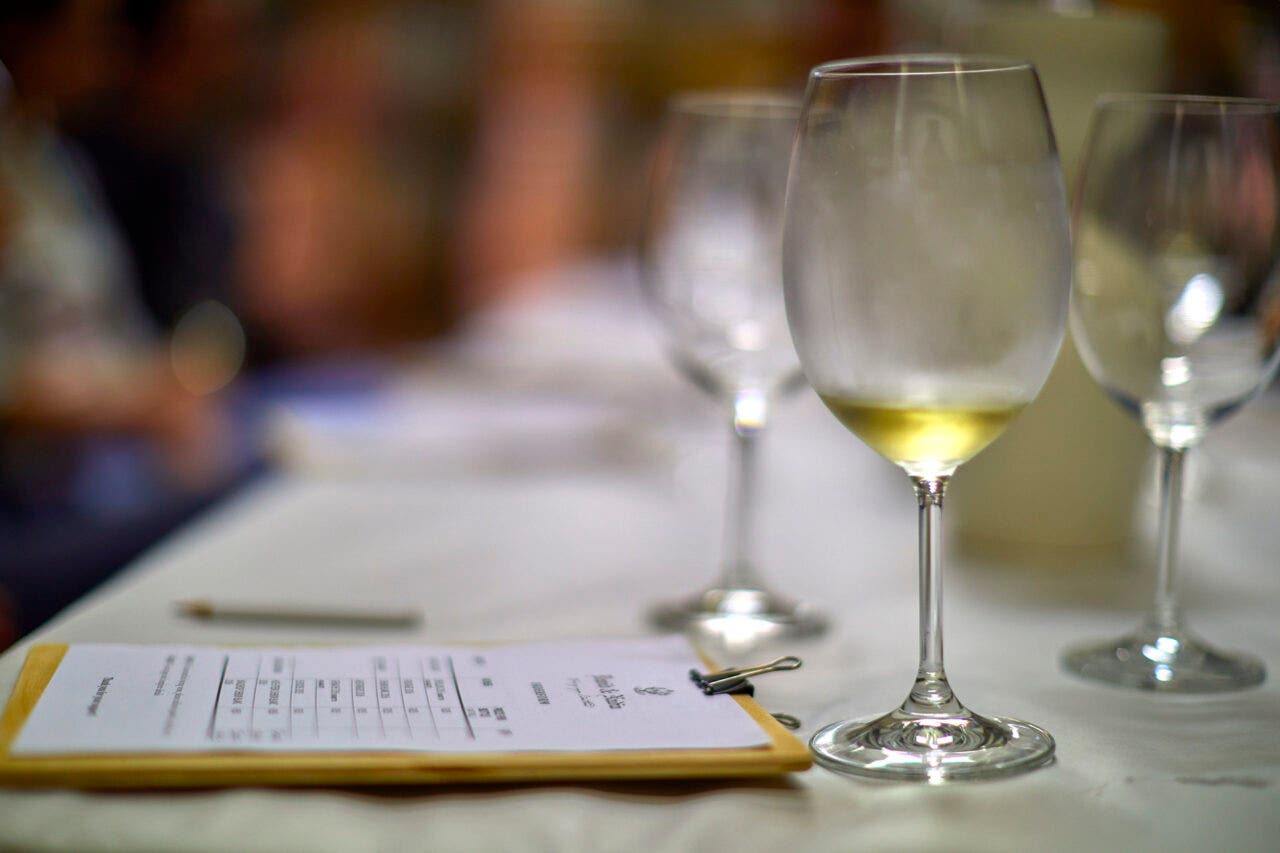Ever wonder how the pros tackle a wine tasting?
Whether it’s the Wine & Spirit Education Trust’s (WSET) Systematic Approach to Tasting, the Court of Master Sommeliers’ Deductive Tasting Format or any other wine education system, most have a common element: The tasting grid.
The tasting grid provides a guide for an objective description of a wine’s character and quality. While there are differences between various grids, they allow the taster to gauge a wine based on appearance, nose and palate, which leads to an unbiased conclusion of quality, age and development.
So how do wine tasting grids work, and what should you do when you approach a new pour?

Judging appearance
The first step is to look at the wine against a white backdrop, like a blank piece of paper. This ensures that wines are not distorted by external colors.
In addition to the color, there are various levels of intensity to gauge. White wines gain color as they age, ranging from lemon and gold to dark caramel. By contrast, reds lose color and intensity with age, as they progress from purple to ruby to deep tawny. So while a typical aged Barolo might be described as pale or medium garnet (a hue between ruby and tawny), a young Australian Shiraz may lean toward deep purple or ruby.
Approaching the nose
Here’s where it starts to get fun. First, you swirl. Swirling allows for increased oxygenation, which can bring out more complex secondary aromas.
The first assessment is to determine if the wine is clean or faulty. Faults can include excess levels of brettanomyces, cork taint, volatile acidity or oxidization. Once you’ve determined a wine is free of faults, the next step is to gauge intensity.
Intensity is usually measured on a scale of low, medium or high. If you can smell a wine from a few inches away, it’s generally regarded as high intensity. If you must put your nose slightly inside the glass, that would equate to a medium intensity. Medium-minus and medium-plus cover the ranges in-between. If you can detect the wine’s aroma with the glass just below your nose, it might be considered medium-plus.
Aroma characteristics are where much obscure wine-geek jargon originates. Aromas of pencil shavings, cat pee, rubber hose or wet dog? The tasting grid tries to eliminate these subjective and eccentric descriptors with specific, standardized terms for each aroma cluster.

Evaluating the palate
The description of the palate, or what you taste, is by far the most in-depth category. A complete tasting note would include levels of sweetness, acid, tannin, alcohol, body and intensity. Once again, these are all graded at low, medium and high levels, with plus or minus used as modifiers for the medium range. Flavor characteristics and finish are factored in as well.
With flavor, the wine is to be described in terms of primary attributes like fruit, floral, herbal or spice. Secondary characteristics include oak, earth, and flavors that result from production techniques like malolactic fermentation and lees contact. Tertiary factors can be bottle age, oxidation and long-term fruit development. Just as with the aroma descriptions, fruit should be organized in clusters.
For example, a young Napa Cab could boast black fruit flavors (black cherry, blackcurrant), where a Sonoma Coast Pinot would more likely exude red fruit character (red cherry, strawberry and raspberry).
Once you’ve nailed down the flavor profile, determining the length of the finish and the wine’s overall complexity is the final step.
Drawing conclusions
For the Court of Master Sommeliers’ grid, there are two conclusions to be drawn. The initial conclusion is to deem a wine as Old World or New World, examining the type of climate, possible grape varieties and country of origin. This gives way to a final assessment of vintage, grape, country, region and designation.
The WSET conclusion starts with an assessment of quality and readiness to drink. That leads to a similar final assessment of grape variety and origin, but also includes style and method of production.
While some variance exists between programs, the premise remains the same for any tasting grid. Dissecting a wine using a formal system based on sight, smell, taste and feel can be equal parts art and science, but the first time you’re able to guess a vintage or variety at a blind tasting accurately, the payoff is worth it.
Check out these samples of the WSET and Court of Master Sommeliers tasting grids, and see if you can taste like a pro at home.
Last Updated: May 4, 2023















